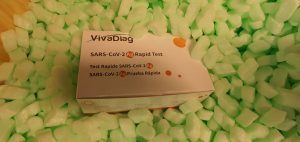Cellular heterogeneity is thought to be a significant factor for remedy response and resistance in a wide range of malignant tumors, together with malignant melanoma. More current developments of single-cell sequencing expertise offered deeper insights into this phenomenon. Single-cell information had been used to establish prognostic subtypes of melanoma tumors, with a particular emphasis on immune cells and fibroblasts in the tumor microenvironment.
Moreover, remedy resistance to checkpoint inhibitor remedy has been proven to be related to a set of differentially expressed immune cell signatures unraveling new targetable intracellular signaling pathways. Characterization of T cell states underneath checkpoint inhibitor remedy confirmed that exhausted CD8+ T cell sorts in melanoma lesions nonetheless have a excessive proliferative index.
Other research recognized remedy resistance mechanisms to focused remedy in opposition to the mutated BRAF serine/threonine protein kinase together with repression of the melanoma differentiation gene microphthalmia-associated transcription issue (MITF) and induction of AXL receptor tyrosine kinase. Interestingly, remedy resistance mechanisms not solely included choice processes of pre-existing subclones but additionally transition between totally different states of gene expression.
Taken collectively, single-cell expertise has offered deeper insights into melanoma biology and has put ahead our understanding of the position of tumor heterogeneity and transcriptional plasticity, which can affect on revolutionary scientific trial designs and experimental approaches.
Experimental Biology 2020 Meeting Abstracts
Bone morphogenetic proteins (BMPs) are progress components that belong to the remodeling progress factor-β (TGF-β) superfamily, and until date 15 BMPs have been described. BMPs, first described for his or her position in bone and cartilage formation, additionally play a task in renal fibrosis in persistent kidney illness (CKD). There is proof to point that in rodent fashions of CKD, administration of recombinant BMP1-Three will increase renal fibrosis whereas administration of a BMP1-3-neutralizing antibody or BMP-7 antibody reduces renal fibrosis and preserves renal operate.
The goal of the current research was to research modifications in gene expression in the renal cortex obtained from cats with kidney illness or calcium oxalate stone formers (CaOx) at necropsy, to establish BMPs related to renal dysfunction in cats and potential fibrosis. At time of loss of life the circulating ranges of creatinine in addition to symmetric dimethyl arginine (SDMA), each markers of kidney decline in cats, had been considerably larger in cats with renal illness (n=11) or stone-forming cats (CaOx, n=12) when in comparison with controls (n=19).
Using RNAseq in kidney tissue, we discovered a modest, however vital, enhance in the expression of BMP-1 in cats with kidney illness (2.48 fold) and stone formers (1.72 fold), in comparison with controls (each p<0.01). While the rise in BMP-2 in CaOx cats was vital (1.46 fold; p<0.05 vs Con), the rise in cats with kidney illness was not (1.23 fold; NS). BMP2K, a BMP-2 inducible kinase, was considerably elevated in each kidney illness (1.43 fold) and CaOX (1.46 fold) (each p<0.05). In distinction, a big lower in BMP4 was noticed in each teams (<2.2 fold and 1.68 fold in kidney illness and CaOx, respectively; each p<0.001 vs Con).
A lower was additionally seen in CRIM 1, a protein related to podocyte filtration operate and whose discount is related to fibrosis, in each teams. BMP-7, whose potential therapeutic position in treating CKD and reversing fibrosis has been documented, was modestly decreased in each teams (each lower than 1.5 fold) in comparison with controls.
Given that there was a rise in all three types of TGFβ (TGFβ1, TGFβ2, and TGFβ3), a potent initiator of renal fibrosis, in each teams, and a decline in BMP-7, an endogenous inhibitor of TGFβ signaling in fibrosis, in comparison with controls, our outcomes profile the BMPs probably related to renal fibrosis in cats that will contribute to kidney dysfunction. In abstract, a dietary remedy to sluggish the development of kidney dysfunction might profit from the inclusion of dietary elements that attenuate renal fibrosis in cats.

Statins, bone biology and revision arthroplasty: overview of scientific and experimental proof
Osteoarthritis is a painful, disabling situation which is rising in prevalence on account of an ageing inhabitants. With no acknowledged disease-limiting therapeutics, arthroplasty of the hip and knee is the commonest and efficient remedy for decrease limb osteoarthritis, nonetheless decrease limb arthroplasty has a finite life-span and a proportion of sufferers would require revision arthroplasty. With rising life expectancy and an rising proportion of youthful (<65 years) sufferers present process arthroplasty, the demand for revision arthroplasty after implant failure can be set to extend.
Statins are cholesterol-modulating medication extensively used for cardiovascular threat discount which have been famous to have pleiotropic results together with probably influencing arthroplasty survival. In vitro research have demonstrated pleiotropic results in human bone cells, together with enhancement of osteoblastogenesis following simvastatin publicity, and in vivo research have demonstrated that intraperitoneal simvastatin can enhance peri-implant bone progress in rats following titanium tibial implant insertion. There is proof that statins can also affect osseointegration, enhancing bone progress on the bone-implant interface, subsequently bettering the useful survival of implants.
[Linking template=”default” type=”products” search=”Magnesium Acetate Tetrahydrate for molecular biology” header=”2″ limit=”140″ start=”2″ showCatalogNumber=”true” showSize=”true” showSupplier=”true” showPrice=”true” showDescription=”true” showAdditionalInformation=”true” showImage=”true” showSchemaMarkup=”true” imageWidth=”” imageHeight=””]
Data from the Danish Hip Arthroplasty Registry and the Clinical Practice Research Datalink in the UK recommend a discount in the chance of decrease limb revision arthroplasty in statin ever-users versus never-users, and a time-dependent impact of statins in decreasing the chance of revision. In this text we overview the scientific and experimental proof linking statins and threat of revision arthroplasty.